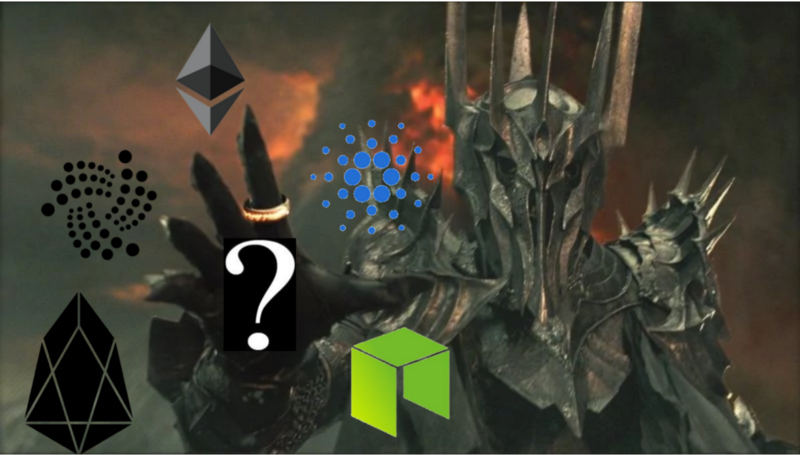Blockchain Platforms: One Chain to rule them all?
By Laura Desmond
Everyone asks: is the world ready for Blockchain? But more importantly, is Blockchain ready for us?
2017 was the year that blockchain made its way into the mainstream’s consciousness. To the outside world, today’s hot topics are “is Bitcoin a bubble”, and “where can I get Ripple?” But people are missing the point. They’re missing the fundamental question that we should all be asking. I don’t believe that today’s focus should revolve around whether or not Bitcoin will still be around a few years from now. A more intriguing question is: “how will blockchain really change the world?” And even that question fails to consider whether the blockchains we have today can actually support these world changing applications. 2018 is set to be a defining year for Blockchain, with many projects set to release a working product or application, and a likely flood of newly converted institutional money. However, this exponentially growing market will continue to strongly highlight whether Blockchains can or could support a decentralised world.
In this piece, we’ll cover a handful of concepts and ideas and go into some technical aspects. I’ll try not to delve too deep into individual concepts, so feel free to research further any of the topics we cover.
The evolution of blockchain & blockchain 2.0

Bitcoin was the first. It was exciting. Revolutionary. It was Steve Jobs in his basement, Neil Armstrong walking on the moon, the caveman harnessing fire. It was the first digitally scarce asset. It solved issues that had plagued developers for years. It is the foundation of this entirely new class of assets. However, just like most new, revolutionary developments, its tech is limited and focused solely on transactions. It’s like trying to develop a modern day application on Windows ’98. Not going to happen. Bitcoin currently is ONLY good as a store of value. And unless drastic scaling measures are taken, that won’t change.
If Bitcoin laid down the blueprints, Ethereum built the house. That house is the smart contract. Smart contracts (digital contracts) have opened up blockchain to a whole new world of possibility and development. Implementing smart contracts has given us the chance to revolutionise our world, cutting out middlemen, and allowing for trust in our digital world. Ethereum is the platform upon which dApps are developed, and the inception of dApps (and in turn ERC20 tokens) has birthed a new economy. Today, Ethereum hosts nearly 85% of all worthwhile projects, and uses its customisable blockchain as their foundation.
Ethereum has been very successful at assembling the industry’s most talented players. Vitalik and the Ethereum community pioneered the future of blockchain application. But with its first-mover advantage comes a few serious challenges. Take the “game-changing” technology of 2002’s Sidekickcellular phone. At the time, no teenager would’ve been caught dead without one of these in their pockets. Who would’ve thought that the first touchscreen would turn the Sidekick into a museum artifact. Not to say that Ethereum already belongs in the museum, but remember, a pack of digital cats repeatedly brought Ethereum to its knees.
Cryptokitties’ popularity exploded in early December and had the Ethereum network gasping for air. With a 465% increase in average transaction price between November 28 and December 12, this specific stretch of time was a definitive moment for the world of Blockchain. A limping and congested Ethereum network started to look a lot like an impossible dream in the eyes of some. Could the hype have been misplaced? Could Ethereum not be the ultimate solution for a truly decentralised world, for an “Internet 3.0”? The discussion shifted away from speculative fantasy towards whether or not Ethereum could really be a herald for the new world. At around the same time, not unsurprisingly, 3rd Gen blockchains started gaining traction. The remarkable run-ups of projects like EOS and Cardano is significant. They should definitely not go unnoticed. But we’ll explore that topic in length later on.
2017 was Year 1 on the mainstream blockchain calendar. 2017 saw a massive increase in the market. Incredible development amongst dApps. Innovative ideas solving some of our world’s biggest problems. The rising number of truly remarkable projects and platforms demonstrates an equal rise in the confidence and power of the smart contract. However, the community has also been struggling to implement a handful of these projects and actually put them to use. The most salient example of all is Ethereum. We saw quite clearly that the platform with the most proposed theoretical application (# of DApps) had no real way of implementing any of it on a large scale.
Now that we have some background, let’s zoom out for a moment:
The question on everyone’s mind is whether or not our society is “ready” to adopt blockchain. Concerns are rooted in society’s (mis)understanding of a rather technical and conceptually difficult idea. For this question, everyone and their mother has a different opinion. But the real question we should be asking is: “is blockchain ready for us.”
I understand that this question might be a little broad. I have broken it down into three other questions, which I think will help us answer the main one.
1. Will Ethereum work?
Ethereum clearly has some issues that many of the third generation platforms are trying to address — this is going to get a little technical, so bear with me. Ethereum’s main deficiency is its protocol. At the moment, Ethereum’s currency, ether, is mined using Proof of Work (PoW) — the same protocol used by Bitcoin.
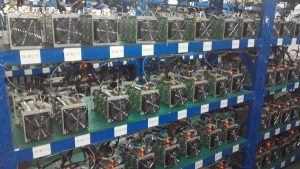
Noam: With Proof of Work, computers on the network compete to solve mathematical formulas and win the right to confirm transactions into the blockchain, and thus, secure the network. The two major drawbacks to the PoW protocol is the danger of a 51% attack and the massive energy consumption required for network security. For these reasons, I think that PoW will soon be an outdated system, as blockchain transitions to a new protocol called Proof of Stake (PoS).
Proof of Stake works similarly to PoW except that instead of computers validating the network and receiving rewards equivalent to their relative computing power, PoS uses token holders. Those who hold tokens can “stake” their tokens (staking means to temporarily place the tokens in a locked smart contract — until staking is over) and in exchange, confirm transactions and receive rewards based on the relative number of tokens held. In PoW, if you operate 5% of the total computing power of the network, you can expect to get 5% of the block rewards. In PoS, if you own 5% of tokens, you can also expect to receive 5% of block rewards.
PoS offers a solution to the issues plaguing PoW — mainly it takes virtually no energy to run PoS — without compromising the security. I would argue that it actually improves security. With Ethereum, and all other PoW protocols, the difficulty algorithm (how hard it is to solve the mathematical formula) must constantly be updated to account for better computer hardware and more powerful mining groups. With PoS there is no need to do this. With Ethereum, you could conceivably purchase enough computing hardware to achieve a 51% attack; even after comprising the network, you would still have all of that hardware and could potentially use it to attack other PoW platforms. With PoS, because you must stake your coins, any malicious behavior results in the loss of all staked coins. So if you bought 51% of all tokens, you would immediately lose your substantial investment. In addition, the costs of purchasing 51% of the network tokens are equal for everyone. The costs of obtaining 51% of computer power — due to discounts for mass computer purchases and countries with extremely cheap electricity — are not.
Back to Lior: The architects of Ethereum are currently trying to transition its network to a PoS protocol. I believe this to be Ethereum’s only refuge if it is to stay relevant. Its current model just doesn’t offer the necessary foundations for an applicable ecosystem. For Ethereum to serve as the foundation for whole industries, a serious upgrade is needed. If the goal is Visa’s capacity for over 440,000 transactions per second, then the Ethereum Network’s meager 15 won’t cut it. Vitalik Buterin, the genius mind behind the first smart contract, is after a solution that would enable the network to be more than just a theoretical utopia.
To ensure Ethereum’s longevity in such a continuously evolving space, developers have offered a few answers:
The Raiden Network
The Raiden Network is an open source project that aims to serve as an off-chain network that facilitates transfers of Ethereum ERC 20 tokens. The Raiden Network utilises state channel technology, enabling off-chain transfers of on-chain tokens. Those transfers are performed by relaying a signed and stamped message directly from the two parties (of a transaction) while the main blockchain itself is not involved. Since only the two parties have access to the smart contract itself, the transfer itself is immune to double spending, making it as safe as an on-chain transaction. It enables the network to scale along with the number of users. This basically means that the more users there are in the network, the higher the throughput will be. The throughput is how fast the nodes can replicate a transaction, not the number of TPS. I believe that Raiden could potentially become a powerful layer for the Internet of Things (IoT) and a machine-to-machine ecosystem. Its creators compare the Raiden Network to a bank that would ensure that “once you receive a Raiden check from someone, you can be absolutely certain that this check is real and that you are now richer than you were moments ago.” So Raiden looks great on paper, but how far along are they? As of today, they are still in development with a working preview soon to be released. Thus, they are still far from implementing a final working solution. A stronger iteration of Raiden (which we’ll not get into on this piece), Raidos, is in planning, but is still not in development.
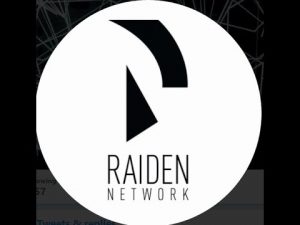
Sharding
Sharding is another possible answer aimed at making Ethereum more than just a dream. Solutions such as Plasma (soon), and the Raiden Network are second-layer protocols, meaning they run off the main Ethereum chain. Sharding is tackling base-layer blockchain protocol architecture, meaning it applies directly to Ethereum’s main chain. This ultimately helps maintain a more decentralised network as sharding will require a smaller percentage of nodes to oversee and authorise every transaction, allowing for the network to potentially authorise thousands of transactions simultaneously. The architects of Ethereum are certain that Sharding, along with Layer 2 protocols such as the Raiden Network, will work in conjunction in order to make Ethereum more supportive of a smart economy. The real issue with Ethereum’s consensus is that every node needs to verify each transaction, slowing the network considerably. The aim for Ethereum is to scale to thousands of transactions per second in the near future, on-chain, without master nodes or any other conditions that would hinder its decentralisation. Vitalik Buterin believes that is a part of the solution for Ethereum’s improved scalability. He says the concept of sharding is similar to having hundreds of similar, yet unique universes. These are separate blockchains that connect to share consensus. Interfering with one of those “worlds” would mean interfering with all of the “world” sharing consensus and authorisation power. Sharding is essentially creating a new “world,” and many more, without it affecting the main-chain.
An example that helped me understand the concept of Sharding without getting into too much technical detail: Imagine that three nodes A, B, C, have to verify data T. Instead of each node verifying all of the data, data T is broken into 3 shards: T1, T2, T3. Instead of individually authorising the entire data T, nodes A,B,C verify each shard simultaneously in order to facilitate the verification of the data — reducing latency.
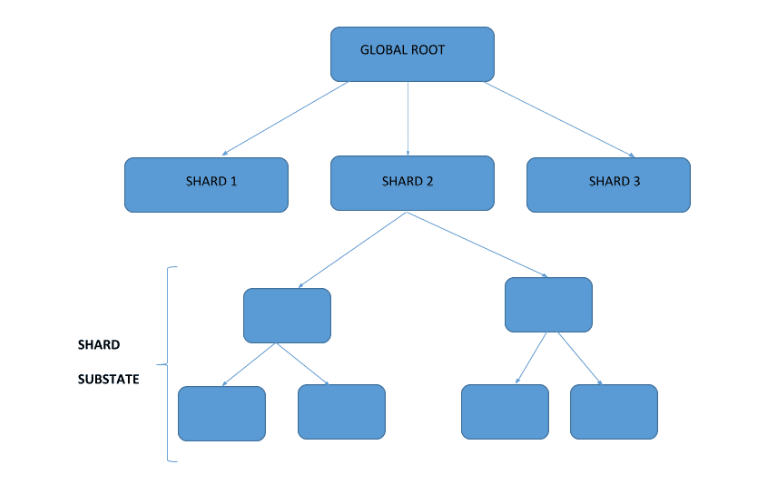
Plasma
To best understand Plasma, think of a Raiden network that, instead of facilitating payments, facilitates smart contracts. Ethereum, like a handful of other platforms, is exploring methods to reduce the amount of traffic recorded and authorised directly on the main chain. Plasma serves two purposes: the first, is to reframe all the network’s computations into simpler formats. The second, is to enable a method to utilise PoS token bonding on top of existing blockchains since PoW’s incentive model could potentially encourage block withholding. Block withholding is when a miner solves a block, but doesn’t “publish” the results — thus withholding it from the network. Plasma pairs smart contracts on the main blockchain by using fraud proofs, a technique that gives full nodes the ability to de-validate a faulty chain. This protects the integrity of the main chain. These fraud proofs enforce state transitions on a parent blockchain. Plasma basically creates “child chains” on top of a main chain, each capable of relaying information to the main chain. Much like the Raiden Network, Plasma is a second layer built on top of Ethereum’s core. Vitalik strongly believes that this, along with the many other upcoming changes, should revitalise the Ethereum network and boost its longevity.
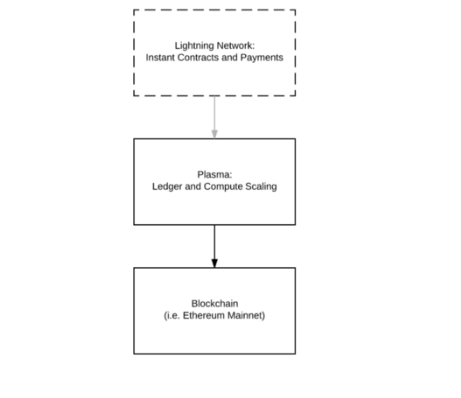
Conclusion
Will Ethereum be able to effectively scale? Another pressing question is: will it hold its own before a 3rd generation platform becomes the new standard for a decentralised, blockchain infrastructure? With second-layer additions such as the Raiden Network and Plasma, and changes to base-layer architecture (sharding), it looks like Ethereum has a plan — a potential solution.
However, simply having a proposal doesn’t solve Ethereum’s problems. My biggest concern is that it will be difficult for Ethereum to actually implement this solution via a decentralised governance system, and thus, an inherently inefficient model. Without centralised decision making, changes happen slowly. Top Apple executives decide when to put out the next iPhone. Ethereum doesn’t have that luxury. Changes need to be validated, accepted by the network, and only then can they be implemented. We have yet to see any of these scaling solutions deliver on their creators’ promises. Ethereum’s foundation is inarguably weaker; think of Ethereum’s scalability solutions like much-needed renovations to an old house. Ethereum is renovating a house with a weak foundation, while 3rd generation platforms study the blueprint (Ethereum’s) carefully, choose a new plot of land, and redesign the parts they didn’t like.
2. What are 3rd Generation Platforms? What do they offer that Ethereum doesn’t at the moment?
So we’ve mentioned 3rd Gen platforms quite a few times already; let’s take the dive. Since the birth of the first smart contract, a large stream of the associated gold-rush migrated towards not DApps, but protocols that could bring us closer to real-world implementation and adoption. These projects aim to become a better, faster, stronger baseline for real-world use, and are all trying to sculpt the magical trap-door that will transport us into a novel, futuristic world. How do these projects differ from Ethereum, and what is the hype all about?
New blockchain projects such as EOS or Cardano are busy developing answers and solutions to Ethereum’s current issues. While many of these projects approach those issues from different angles, a few key components are usually addressed. All blockchain systems and protocols are hard at work to build a foundation that enables real world use and adoption. For a blockchain, adoption equals success. I like to break up a blockchain’s adoptability into three key components: scalability, interoperability, and overall usability.

Scalability
Scalability has always been at the heart of the blockchain debate — even before it was cool. This is probably the term you’ve heard or read about the most here, so I won’t go too deep. But I’ll add my perspective — especially in regards to emerging blockchains.
Since the inception of the very first blockchain, we’ve been busy formulating solutions to increase scalability. If you’re a blockchain beginner: Scalability is a blockchain’s ability to accommodate as many users as possible on the chain while still retaining low transaction fees and fast consensus.Ethereum and Bitcoin’s scalability issues stem from their now-inefficient consensus protocols. This inefficiency percolates down to a few major drawbacks. One of those is the longer block time. Block time is the time it takes to generate a set amount of transactions on the blockchain. Because transactions need to be on the blockchain to be considered valid, block time determines how fast and how many transactions can be processed in a set time.
Noam: Bitcoin has 1MB block sizes and 10 minute confirmation times. A 1MB block size means that about 2,000 transactions can be included in each block. Miners have to solve a mathematical formula to place the block. 10 minute confirmation times means that the math formula is custom created to take 10 minutes. 1MB (2000 transactions) every 10 minutes is achingly slow. It’s the line at Costco the day before Superbowl Sunday slow. It’s download speed at grandma’s slow. 1MB/10min translates to .00167mbps (MB/second). Try watching Netflix on that speed. Singapore, with the fastest internet speeds in the world, averages 154mbps — that’s 92,000 times faster than bitcoin’s speed. Visa is 7,200 times faster at processing transactions than bitcoin. Ouch. That’s sloth from Zootopia slow…okay, I’m done.
Back to Lior: A blockchain with an extremely low throughput and TPS rate gravely limits its overall capacity and adoptability. Today, newer structures are being designed with scalability at their very core. Many projects are starting to adopt innovative consensus protocols, sometimes sacrificing decentralisation in favour of scalability. My opinion is that this is the right direction. As I will continue mentioning, I believe that businesses and institutions will be the first to adopt this technology on a massive scale, and all of those will require different levels of centralisation, with specific use-cases for each. At the early stages of adoption, we will need strong-enough tech to make our crypto-dreams a reality, and we’ll need efficiency before we achieve ideal, complete decentralisation. My conclusion is that a blockchain’s most important undertaking is to reach a level of scalability that can enable the first large-scale, real-world adoption of blockchain tech.
Interoperability
With an ever growing number of different protocols, and no signs of slowing down, interoperability is becoming vital.
Interoperability is a protocol’s capacity to interact and cooperate with different blockchains, and to facilitate smart contracts between one protocol and another. Interoperability is regarded by many as the “holy grail” of blockchain tech, since it will be the main factor that will help bring blockchain tech into the real world. The very essence of interoperability is to eliminate the need for centralised intermediaries, improve capacities of performance and scalability, and to connect between private and public chains. Once businesses and other institutions start adopting blockchain, it is safe to assume that most of them won’t be adopting the same protocols and systems, since those platforms and systems will each address different use-cases with varying levels of decentralisation and integrations. So the integration of blockchain technology through ERP and CRM software will most likely be through a number of different blockchains and not just one. All of these foundational protocols will need to cooperate with each other in order to successfully take an active role in this emerging ecosystem. If you’re still hazy about the meaning of interoperability in blockchain, an interesting parallel could be made with Facebook: today, virtually everything on the internet is accessible through your Facebook account. Remember when you used to have separate accounts for everything? Facebook definitely controls your life, but it also makes it a lot easier. Seamless integration was Facebook’s goal from day one, a key component to its 2 billion user base.
What does this all mean?
Many projects are transitioning from simple smart-contract interoperability, towards seamless sharing of information across blockchains. These agnostic protocols are able to inherently work freely and seamlessly with each other, rather than setting up additional layers of communicativity between different networks. Imagine being fluent in every language, rather than sitting on Google Translate all day. AION, ICON, and WanChain notably are projects that recently established the “blockchain interoperability alliance,” dedicating research and resources towards setting a standard of interoperability for emerging blockchain networks. My conclusion is that the blockchain projects with interoperability at their core will survive the test of time and adaptability, ultimately making them truly adoptable tech.
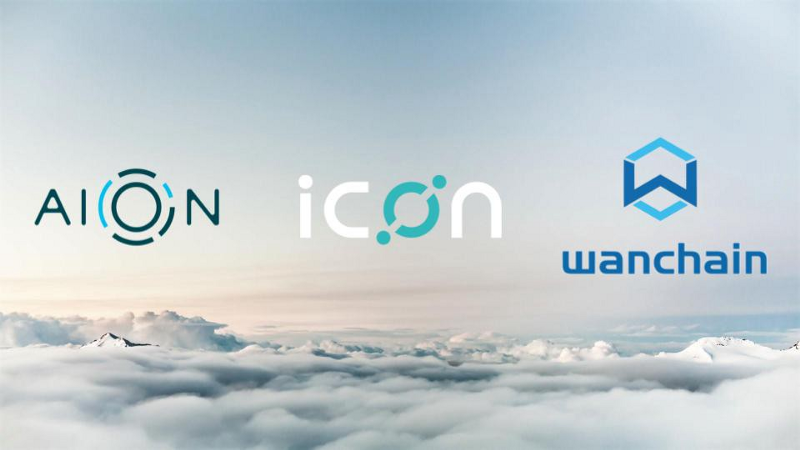
Usability
With scalability and interoperability out of the way, what else does a platform serving as a foundation for a real economy need? Usability. Usability is a culmination of a few key attributes, but to make things easier for everyone, this definition first: the foundation needs to be easily usable by end-users as well as by developers. By developers I mean the guys decorating an empty house (creating DApps), and by end-users I mean You, the person who decides to sit in that house because it’s nice and comfortable. If you think you are lazy, those techies you call developers will crush the stigma you’ve made for yourself. None of them like to work on a platform that doesn’t give them everything they need in order to build everything you want. New platforms make developer’s lives easier with functional programming languages, smart contract audits, and easy-to-deploy, customisable blockchains. But this is just one consideration for usability. Ease of use is enormously important. Why does iPhone rule the world? Not because it has a better processor, more powerful camera, or wireless charging — other phones annihilate iPhones in all those areas. iPhones are king because they’re easy to use; they’re sleek, well designed, intuitive, compatible with all your devices. So blockchains need to build the iPhone equivalent. The end goal in my opinion is for the end user to not even know they’re using a blockchain. Today, third generation platforms accomplish this in a variety of ways. They translate those long Ethereum addresses into name based addresses (so you can finally use that 69BoomHeadShot420 Call of Duty callsign as an address). In addition, just like how you don’t pay to interact with a website (the host does), with projects such as EOS, the user doesn’t pay the fees, the host of the smart contract pays. Projects such as Elastos make blockchains accessible from smart phones and from any operating system. To conclude, blockchain that is easy for developers and user friendly will be adoptable.
MVPs
Here are some projects I’ve been following closely, that all approach the challenges that blockchains are facing from different angles. There are MANY more, but I will focus on just a few.
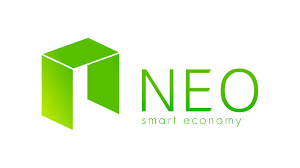 NEO — NEO exemplifies interoperability, scalability, and usability, but at the cost of true decentralisation. NEO connects with a host of blockchains within the ecosystem, such as Ontology and Elastos, connecting private enterprise blockchains with public blockchain solutions. Their scalability is massive, with significant transaction speeds and developing off-chain solutions. NEO and the NEO community focus on developing projects that allow for simple development for businesses and users alike.
NEO — NEO exemplifies interoperability, scalability, and usability, but at the cost of true decentralisation. NEO connects with a host of blockchains within the ecosystem, such as Ontology and Elastos, connecting private enterprise blockchains with public blockchain solutions. Their scalability is massive, with significant transaction speeds and developing off-chain solutions. NEO and the NEO community focus on developing projects that allow for simple development for businesses and users alike.

EOS — EOS exemplifies usability for both users and developers. As aforementioned, because smart contract hosts pay the network fees, users interact with EOS for free. With horizontal scaling and an efficient dPoS consensus mechanism, EOS can support hundreds of thousands of transactions per second and seriously intensive applications. Name based addresses bring ease of use and its foundational Graphine technology is already handling massive throughput on Steemit and BitShares.
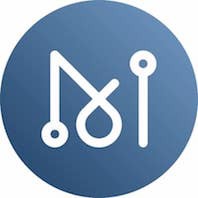
MatrixChain — MatrixChain integrates AI with blockchain. MatrixChain uses AI in some unique ways that ultimately, simplify the user experience. AI can audit smart contracts and code to ensure that loopholes and bugs aren’t present. Users can just input the specifications for the smart contract in simple scripting language; the AI then converts the specifications into smart contracts. But this is not a simple task; the AI needs to infer from the specifications what the purpose of the smart contract is, and then enable it. AI will also optimise the blockchain protocol according to environmental and usage inputs. Essentially, the blockchain will be continuously optimising to account for actual usage, without hard forks.
MatrixChain uses a hybrid PoW and delegated PoS protocol. The blockchain is broken into different pieces where mining and consensus happen separately to increase scalability (think sharding). But unlike other PoW models, The computing nodes aren’t just solving pointless algorithms. Miners perform Markov Chain Monte Carlo (MCMC) computation — if your brain went dead reading that, hold on. MCMC computation is really important for solving certain algorithms. Even a simple explanation is above the scope of this article, but recognise that MCMC is critical for real world, big data applications. As such, Matrix mining is actually useful for solving real world problems.
Back to Lior:
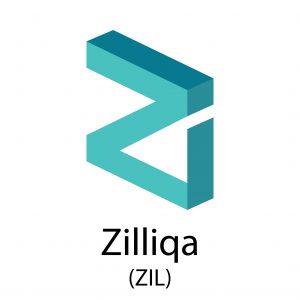
Zilliqa — Zilliqa is a blockchain platform that is designed to scale in an open, permission-less, and distributed network securely. The core feature that makes Zilliqa scalable is sharding — dividing the network into several smaller component networks capable of processing transactions in parallel. At Ethereum’s present network size of 30,000 miners, Zilliqa would expect to process about a thousand times the transaction rates of Ethereum. Zilliqa leverages PoW, as well as PoS. It does not use PoW for consensus. However, the platform uses PoW only to prevent Sybil attacks and generate node identities. This is in contrast to many existing blockchain platforms (in particular Bitcoin and Ethereum), where PoW is used to reach distributed consensus. Zilliqa employs Ethash, the PoW algorithm used in Ethereum 1.0. The consensus protocol comprises of the overarching layer of directory committee, and a refinement of the PBFT protocol in each shard. Zilliqa employs Elliptic Curve Based Schnorr Signature Algorithm (definitely not getting into it in this article) with multi-signing or signature aggregation. This means that the size of the signature stays small even when a lot of miners sign a block. Moreover, by leveraging efficient network topology, Zilliqa’s consensus scheme reduces the communication complexity linear to the size of the network. Zilliqa proposes an innovative special-purpose smart contract language and execution environment that leverages the underlying architecture to provide a large scale and highly efficient computation platform.
Some more interesting projects: Qtum, ICON, Nebulas, Elastos, Ontology, and many more.
3. Could a specific blockchain achieve GLOBAL integration?
Imagine an entire economy based on a decentralised blockchain. All data is maintained and protected. Supply chain integration allows for rapid and improved commerce; even voting is done via your private key and the blockchain. All stamped by Ethereum or EOS. It’s a libertarian’s wet dream and all that anyone is talking about today. But we believe there are some serious hurdles for blockchains (let alone a single one) to overcome on their way to global adoption. Everyone is talking about how blockchain is going to change our entire world, and today (similar to the rise of Internet) we’re using it to stretch our limits and see how far it can get us.
I believe that we are still far away from “one blockchain to rule them all” (Gollum is on the lookout), due to a variety of reasons. Beyond the clear issues that we’ve addressed throughout this piece (scalability, usability, and more) which I will try to reiterate, I foresee serious difficulties in getting one single, decentralised system approved and supported by all governments and authorities. Do I think that China and Switzerland will have the same standards for a blockchain that they both support and approve? Unlikely. Trade laws, borders, language barriers, and taxes all serve as obstacles for multinational blockchains. And back to the initial adopters of blockchain; I don’t see a good enough reason for all businesses, institutions, or even governments and authorities to use the same foundational structure for their largely varying needs of centralisation and use cases.
To conclude, I absolutely do NOT believe that a single blockchain could achieve global integration any time soon. More importantly, as I see the future of blockchain and its impacts on our world, I really don’t think there is a real reason for there to be just one. With chains growing more interoperable and usable, we will see a lot of compartmentalisation and chains that will specialise in various use cases. This ecosystem will continue growing and specialising, and I don’t think we’ll see this process slow down any time soon.
Conclusion
Our world is complex, our economies immense, our requirements diverse. This network cannot be serviced by one platform, but instead, will be supported by an interconnected web of usable, interoperable, and scalable blockchains. These blockchains will be the iPhones of our decentralised world— simple to use, inexpensive, and secure. And we are only at the beginning. Every month brings more advanced features, more powerful developments, more streamlined services. For now, whether or not the world is ready for blockchain, it’s clear that our platforms certainly aren’t. But with third generation blockchains in development, and the inevitable fourth, fifth, sixth generations on the horizon, that won’t remain true for long.

